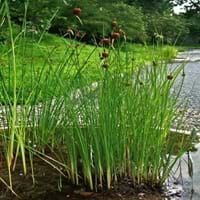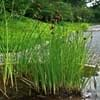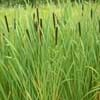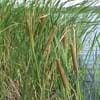Life Span
Perennial
Perennial
Type
Aquatics
Flowering Plants, Fruits, Herbs
Origin
Eastern Europe, Western Asia
Australia, Tropical Indomalaya
Types
Common Cattail, Southern Cattail, Dwarf Bulrush
Cavendish Bananas, Lady Finger Bananas, Pisang Raja, Williams Bananas, Cooking Bananas
Number of Varieties
Not Available
Habitat
Lake margins, Ponds, Swamps
Subtropical climates, Tropical rainforest, Tropical regions
USDA Hardiness Zone
3-11
8-15
Sunset Zone
21,22
H1, H2, 2a, 2b, 3a, 3b, 4, 5, 6, 7, 8, 9, 14, 15, 16, 17, 18, 19, 20, 21, 22, 23, 24
Habit
Upright/Erect
Upright/Erect
Flower Color
Yellow, Green, Brown, Chocolate
Burgandy, Ivory, Purple, White, Yellow
Flower Color Modifier
Not Available
Not Available
Fruit Color
Light brown, Light Red
Red, Yellow, Yellow Brown, Yellow green
Leaf Color in Spring
Green, Dark Green
Dark Green
Leaf Color in Summer
Green, Dark Green
Green
Leaf Color in Fall
Green, Dark Green
Green
Leaf Color in Winter
Brown
Green
Leaf Shape
Long linear and narrow
Cone shaped
Plant Season
Summer, Fall, Winter
Fall, Spring, Summer
Sunlight
Full Sun, Partial Sun
Full Sun, Partial shade
Type of Soil
Clay, Loam, Sand
Clay, Loamy
The pH of Soil
Acidic, Neutral
Neutral, Slightly Acidic
Soil Drainage
Poorly Drained
Well drained
Bloom Time
Summer, Late Summer, Early Fall
Early Fall, Early Summer, Late Spring, Late Summer, Summer
Tolerances
Wet Site
Not Available
Where to Plant?
Container, In Water
Ground
How to Plant?
Runners
From bulbs
Plant Maintenance
Low
Medium
Watering Requirements
Plant grows in water
Allow soil to be completely dry in between waterings, It cannot sustain wet-feet, Requires regular watering, Water every two or three days during warmer months
In Summer
Aquatic Plant
Lots of watering
In Spring
Aquatic Plant
Moderate
In Winter
Aquatic Plant
Average Water
Soil pH
Acidic, Neutral
Neutral, Slightly Acidic
Soil Type
Clay, Loam, Sand
Clay, Loamy
Soil Drainage Capacity
Poorly Drained
Well drained
Sun Exposure
Full Sun, Partial Sun
Full Sun, Partial shade
Pruning
Prune in early spring, Remove damaged leaves, Remove dead branches, Remove dead leaves
Prune after harvesting, Remove dead or diseased plant parts
Fertilizers
Nitrogen, Phosphate
All-Purpose Liquid Fertilizer
Pests and Diseases
Red blotch
Anthracnose, Banana aphid, Banana mosaic, Black sigatoka, Bunchy top, Cigar end rot, Coconut scale, Moko disease, Panama disease, Rhizome rot, Yellow sigatoka
Plant Tolerance
Drought
Drought
Flower Petal Number
Single
Single
Foliage Texture
Medium
Bold
Foliage Sheen
Matte
Glossy
Attracts
Birds, Flying insects
Not Available
Allergy
Not Available
Anaphylaxis, Mouth itching, Throat itching
Aesthetic Uses
Beautification, Showy Purposes, Water gardening
Not Available
Beauty Benefits
Not Available
Not Available
Environmental Uses
Food for animals, Food for birds, Food for insects, Nesting sites for birds
Air purification
Medicinal Uses
Nutrients
Anemia, Antioxidants, Bronchitis, Diarrhea, Hangover, Heartburn, High blood pressure, Kidney problems, Menstrual Disorders
Part of Plant Used
Leaves
Flowers, Fruits
Other Uses
Decoration Purposes, Showy Purposes, Used as Ornamental plant
Pulp can be used to make rope place mats and other goods, Used As Food, Used in paper industry
Used As Indoor Plant
Yes
No
Used As Outdoor Plant
Yes
Yes
Garden Design
Bog Garden, Container, Water Gardens
Showy Tree
Botanical Name
TYPHA minima
Banana Tree
Common Name
Dwarf Cattail
Banana Tree
In Hindi
बौना कैटेल
केले के पेड़
In German
Dwarf Rohrkolben
Bananenbaum
In French
Cattail nain
Bananier
In Spanish
Espadaña enano
Banano
In Greek
Νάνος Cattail
μπανανιά
In Portuguese
Tifa Dwarf
árvore de banana
In Polish
Dwarf Ożypałka
Banana drzewa
In Latin
Pumilio Cattail
Musa sapientum fixa ligno
Phylum
Tracheophyta
Magnoliophyta
Class
Liliopsida
Liliopsida
Order
Poales
Zingiberales
Family
Typhaceae
Not Available
Clade
Angiosperms, Commelinids, Monocots
Monocotyledonous
Tribe
Not Available
Not Available
Subfamily
Not Available
Not Available
Number of Species
Not Available
Season and Care of Dwarf Cattail and Banana Tree
Season and care of Dwarf Cattail and Banana Tree is important to know. While considering everything about Dwarf Cattail and Banana Tree Care, growing season is an essential factor. Dwarf Cattail season is Summer, Fall and Winter and Banana Tree season is Summer, Fall and Winter. The type of soil for Dwarf Cattail is Clay, Loam, Sand and for Banana Tree is Clay, Loamy while the PH of soil for Dwarf Cattail is Acidic, Neutral and for Banana Tree is Neutral, Slightly Acidic.
Dwarf Cattail and Banana Tree Physical Information
Dwarf Cattail and Banana Tree physical information is very important for comparison. Dwarf Cattail height is 30.50 cm and width 45.70 cm whereas Banana Tree height is 16.08 cm and width 7.87 cm. The color specification of Dwarf Cattail and Banana Tree are as follows:
Dwarf Cattail flower color: Yellow, Green, Brown and Chocolate
Dwarf Cattail leaf color: Green and Dark Green
Banana Tree flower color: Burgandy, Ivory, Purple, White and Yellow
- Banana Tree leaf color: Dark Green
Care of Dwarf Cattail and Banana Tree
Care of Dwarf Cattail and Banana Tree include pruning, fertilizers, watering etc. Dwarf Cattail pruning is done Prune in early spring, Remove damaged leaves, Remove dead branches and Remove dead leaves and Banana Tree pruning is done Prune after harvesting and Remove dead or diseased plant parts. In summer Dwarf Cattail needs Aquatic Plant and in winter, it needs Aquatic Plant. Whereas, in summer Banana Tree needs Lots of watering and in winter, it needs Average Water.





